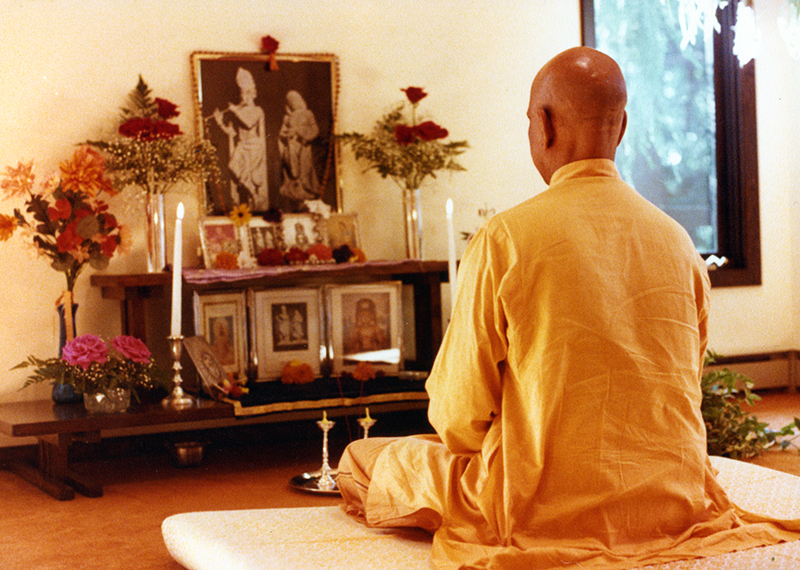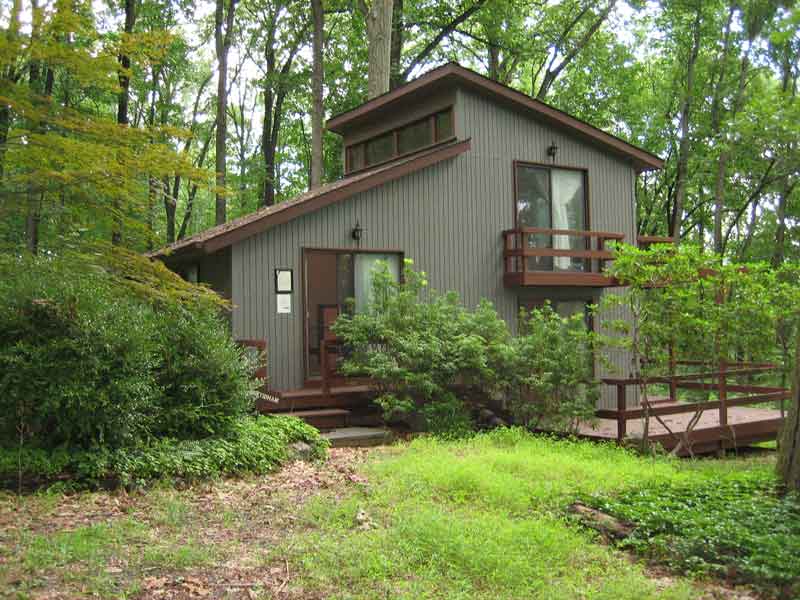The History of Muktidham

Muktidham, meaning “Abode of Liberation,” is a secluded meditation cabin perched on a forested hill in Sumneytown, Pennsylvania. It was part of the first Kripalu ashram in the United States, founded by Yogi Amrit Desai in honor of his guru, Bapuji. Built in 1974 with the help of resident disciples, the two-story structure was created as a private space for Yogi Desai’s sadhana. It included two rooms, a small kitchen, and a bath. The upper room opened to a balcony overlooking the wooded land below and was reached by 108 stone steps, reflecting the number of beads in a mala.
In 1977, Bapuji arrived in the United States and took up residence in Muktidham for what was expected to be a short, three-month stay. He used the upper room for rest and meditation, and the lower level for study and instruction. There, he practiced ten hours of Kundalini Yoga sadhana each day, sleeping on a simple mat and maintaining a precise and disciplined schedule. He remained largely in silence and offered advanced instruction to a small group of close disciples, including Yogi Desai, Vinit Muni, Ashutosh Muni, and Mataji. Even during silent periods, he wrote on a slate, and his words were read aloud to those present.
One day, Bapuji called Yogi Desai close and said, “Today I feel that the name you gave my residence is truly fulfilled.” He had attained Nirvikalpa Samadhi—the final, thoughtless, formless state of union, the ultimate fulfillment of yoga. His Muktidham residence had become, in truth, the Abode of Liberation.
The cabin became a sanctified space through Bapuji’s unwavering presence and deep spiritual focus. Before departing the United States in 1981, he turned to face Muktidham, brought his palms together in pranam, and lay his body on the ground in full prostration, a final gesture of gratitude to the place where his sadhana had reached its highest fulfillment.
Since Bapuji’s departure, Muktidham has been preserved in its original form. It remains a place of pilgrimage, visited by those who seek connection to the sacred energy he established there. The simplicity of the space has been lovingly maintained, allowing future generations to enter the stillness that once held the presence of a master. Muktidham continues to stand as a living testament to the fulfillment of sadhana.


